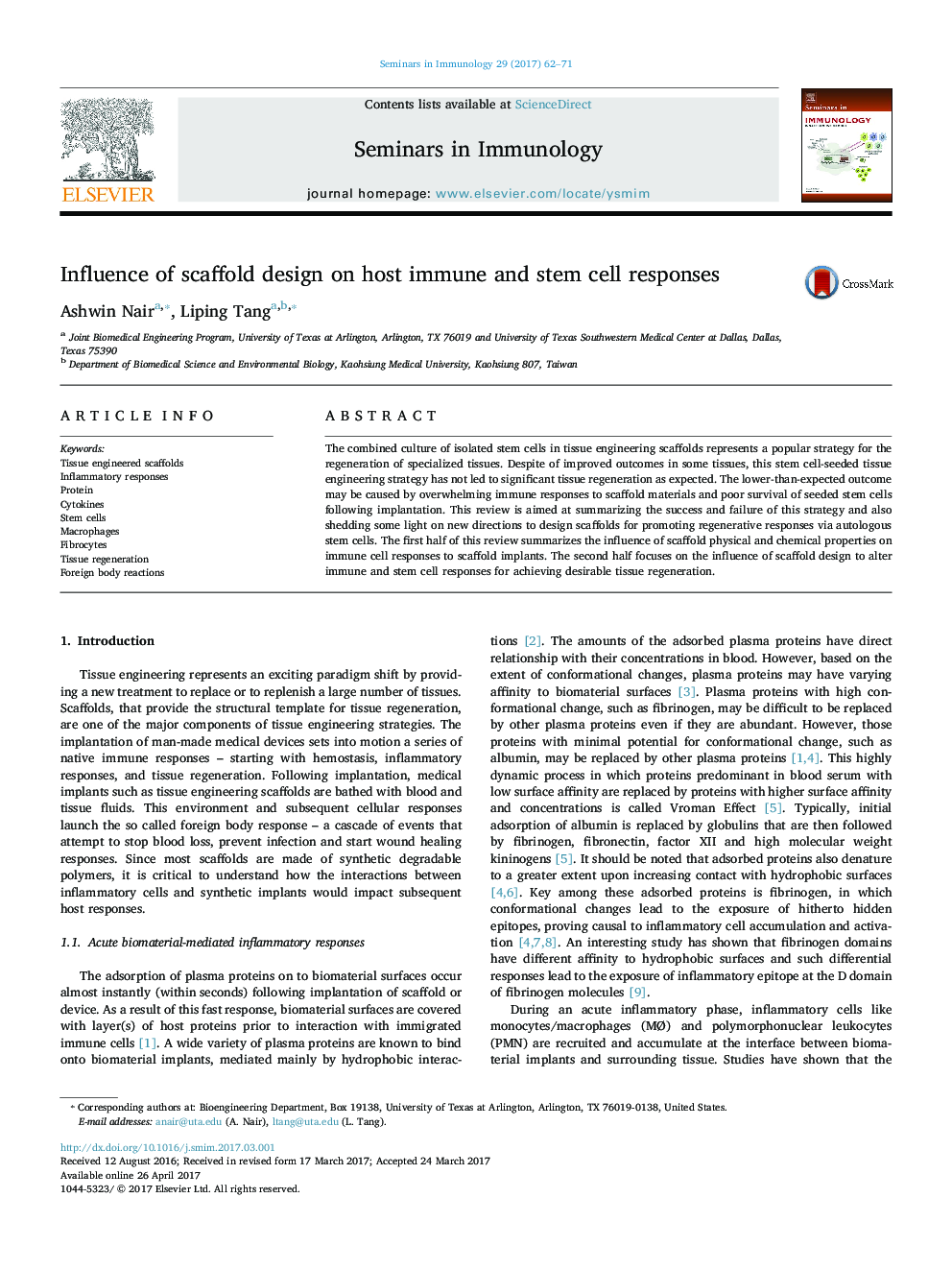| Article ID | Journal | Published Year | Pages | File Type |
|---|---|---|---|---|
| 5670428 | Seminars in Immunology | 2017 | 10 Pages |
The combined culture of isolated stem cells in tissue engineering scaffolds represents a popular strategy for the regeneration of specialized tissues. Despite of improved outcomes in some tissues, this stem cell-seeded tissue engineering strategy has not led to significant tissue regeneration as expected. The lower-than-expected outcome may be caused by overwhelming immune responses to scaffold materials and poor survival of seeded stem cells following implantation. This review is aimed at summarizing the success and failure of this strategy and also shedding some light on new directions to design scaffolds for promoting regenerative responses via autologous stem cells. The first half of this review summarizes the influence of scaffold physical and chemical properties on immune cell responses to scaffold implants. The second half focuses on the influence of scaffold design to alter immune and stem cell responses for achieving desirable tissue regeneration.
